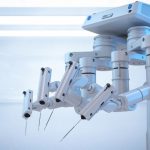At DEF CON, three security teams secured a combined $8.5 million for notable efforts in using artificial intelligence to autonomously detect and address vulnerabilities in open-source code. Their success marked the culmination of the Defense Advanced Research Project Agency’s (DARPA) two-year AI Cyber Challenge, highlighting a shift toward automated approaches in bolstering critical software infrastructure. As reliance on digital systems grows, the need to proactively manage software vulnerabilities, especially within sectors such as healthcare, has become increasingly vital. Contest organizers underscored the urgency of adapting to technical debt and advancing cyber-resilience through collaborations between public agencies and major tech companies such as Google, Microsoft, Anthropic, and OpenAI.
Previous reports on DARPA’s AI Cyber Challenge emphasized the experimental nature of applying large language models to cybersecurity tasks but lacked detailed results regarding real-world vulnerability discovery and patching speeds. The recent disclosure of model performance, including detection rates and open sourcing of developed tools, offers more concrete evidence of AI-assisted security’s capability. Earlier coverage also focused on participation from tech industry sponsors, yet specifics around deployment in critical infrastructure settings were less clear until now. This contest phase brought forward quantifiable outcomes for both synthetic and real-world vulnerabilities in comparison to earlier event teasers and announcements.
Competition Drives Automated Bug Discovery and Repair
The AI Cyber Challenge tasked teams with building systems capable of autonomously identifying and correcting security flaws in millions of lines of code. Out of 90 original entrants, seven semifinalists were evaluated for their ability to address both known synthetic vulnerabilities and previously unknown zero-day flaws. The finalist systems revealed 77% of synthetic vulnerabilities and generated patches for 61% at an average pace of 45 minutes. Real-world achievements included spotting 18 zero-day issues in C and Java, and successfully fixing 11 Java-specific vulnerabilities automatically.
Winners Plan Further Cybersecurity Innovation
Team Atlanta earned the top prize of $4 million for its model’s performance, with Trail of Bits and Theori following in second and third place, respectively. According to the participants, a significant portion of the winnings will be directed back into research and development or potential commercialization.
“We’re living in a world right now that has ancient digital scaffolding that’s holding everything up,”
noted DARPA Director Stephen Winchell, referencing the complexity of legacy code underlying much of today’s critical infrastructure. Four of the models have been open sourced, with the remainder set to be released, aiming to encourage further external research and adaptation.
Can AI Strengthen Security in Vital Sectors?
Health care emerged as a prime example of sectors facing persistent cybersecurity challenges, especially due to reliance on outdated devices and continuous operation requirements. AI-powered systems offer potential by reducing the industry’s average patch time, which currently stands at over a year.
“Health systems are among the hardest networks to secure… They rely on highly specialized, legacy devices and complex IT ecosystems,”
explained Jim O’Neill, Deputy Secretary of the Department of Health and Human Services, highlighting unique sector-specific risks and the importance of efficient vulnerability management. Leaders expressed cautious optimism regarding the ability of these AI systems to provide practical improvements in securing critical networks and infrastructure.
The outcomes of DARPA’s AI Cyber Challenge suggest measurable if incremental, progress in the ongoing quest for software security. By releasing the models and competition infrastructure as open source, organizers anticipate further community engagement and iterative enhancement. The results demonstrate that AI can support human experts in managing vulnerabilities that were previously considered beyond manual review capacity, especially given expanding codebases and rising technical debt. This approach signals that, with continued research and cooperation between public, private, and academic entities, more robust security mitigation strategies could emerge over time. Developers and organizations should closely monitor advances in AI-driven cybersecurity, as adoption of such solutions may grow to play a central role in risk management for essential services.
- AI-driven cybersecurity tools detected and patched vulnerabilities during the DARPA challenge.
- Winning teams plan to invest their prizes in further research and development.
- The competition’s open-source models aim to boost broader adoption and enhancement.










